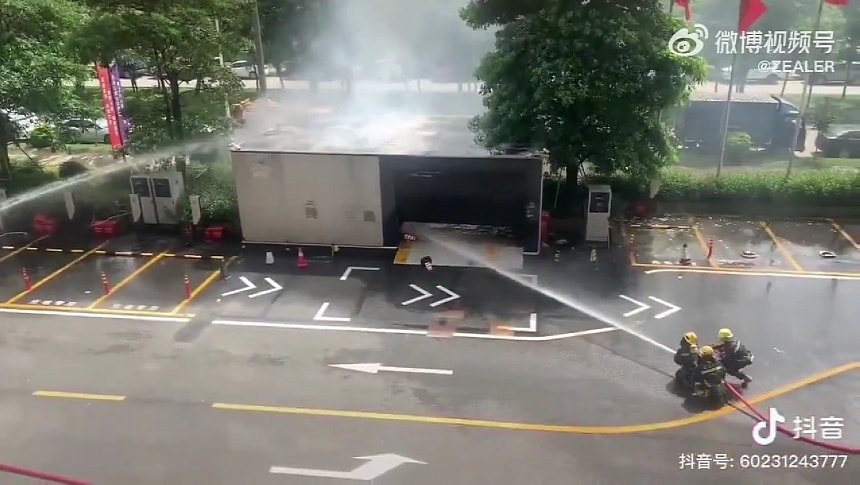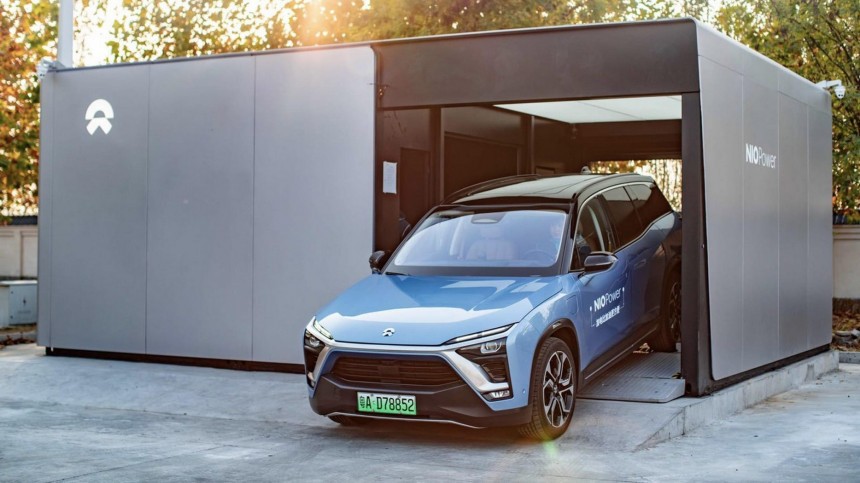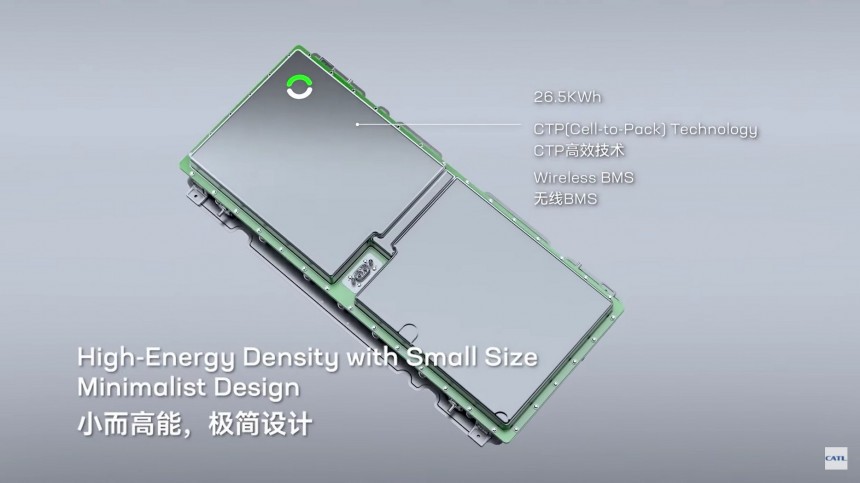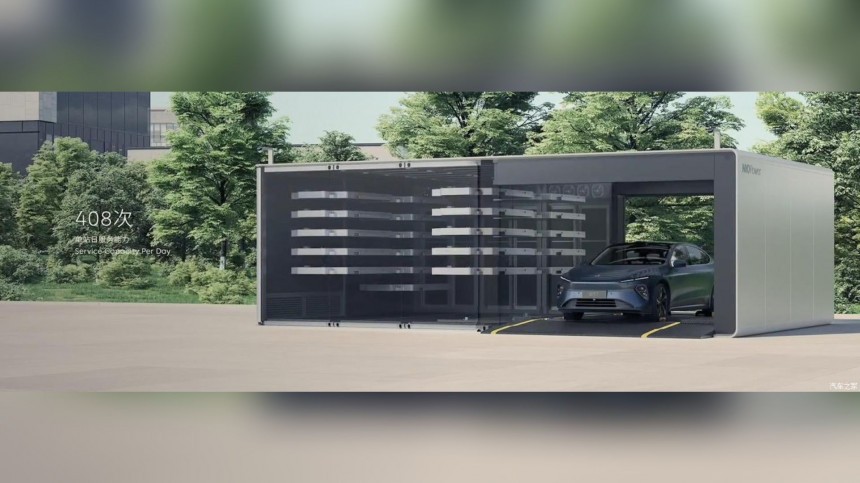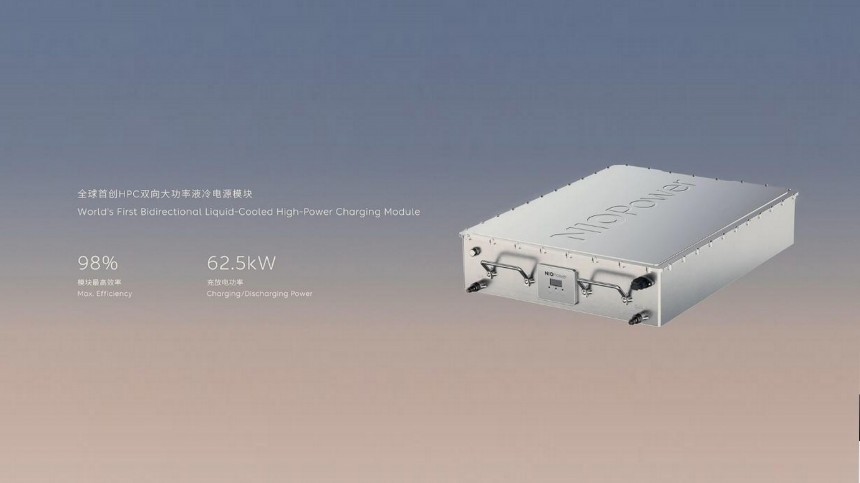NIO has been advocating for battery swapping since its creation. It is the most successful brand in China (and possibly in the world) to adopt this strategy, which is meant to make battery electric vehicles (BEVs) more convenient and remotely comparable to traditional cars in that regard. For it to work as it should, battery swapping should be as universal as possible, fitting any vehicle, which was not NIO's approach. The least we expected was that all the company's products would be compatible with it, but we were wrong. NIO's CEO recently confirmed that the company's new brand, codenamed Firefly, would not use the same swap stations.
That does not make any sense unless the idea is for NIO to admit poor planning. When the Chinese carmaker developed its battery-swapping system, it was meant for cars with a wheelbase of at least 2.80 meters. The new Firefly cars are much smaller, made to be cheaper options and to sell in much higher volumes. That's great, but it renders all current NIO infrastructure useless to these vehicles. For Firefly, the Chinese automaker will have to establish a specific battery-swapping network. It is twice as much investment in the same thing, even if Firefly's swapping stations are cheaper: the company will need a lot more of them for these vehicles to be as popular as they are supposed to be.
In a way, that may ensure NIO's luxury ownership experience, keeping its swap network exclusively for its brand. On the other hand, it will be costly for the company. Is its attempt to establish itself as a premium brand worth so much financial effort? More than that, wouldn't this become the easiest excuse for what smells, looks, and feels like just a mistake? Allow me to rephrase that: the new battery-swapping system for Firefly is rather a poor attempt to fix a flawed battery-swapping approach.
NIO has known since its foundation that it can only become a global player with high sales volumes. If its cars are to offer battery swapping, the system should be available to any vehicle it manufactures. Why did the carmaker conceive it only for cars with a minimum wheelbase of 2.80 m when most BEVs are a lot shorter than that? Once it realized such a massive mistake, why didn't it try to fix it with modular battery packs, such as the ones proposed by Ample and CATL?
I discussed Ample's battery module swapping for the first time in April 2022. It makes battery modules as big as a shoebox, which allows any company adopting them to fit as many as possible in any car. A compact vehicle can get 10 modules, while a midsize car can fit between 16 and 20 modules. Regardless of the vehicle size, the battery modules are the same, just like your remote control and a wall clock will use the same AA batteries.
With the modules, you can also select only the ones needed for a given use. Should you only travel short distances and recharge your car at night, you could use fewer modules. That will make your BEV lighter and increase its range. If you need to travel longer distances, you can install more modules and swap them to keep going. That's not something NIO's system allows. Whether on short-distance or road trips, you will always get a big battery pack.
CATL made a slightly different proposition than Ample with its Choco-SEBs (swapping electric block). As the name suggests, these 26.5 kWh battery modules look like chocolate bars because they are much larger than the shoeboxes used by Ample. While that prevents cars compatible with them from seizing every little possible space available for batteries, swapping them may be faster than dealing with several smaller battery modules. That may also increase energy density.
Whether a car uses Ample's energy shoeboxes or CATL's Choco-SEBs, these modules offer possible universal standards for battery swapping. NIO could have pursued precisely that, but it didn't. Even worse, as we now know, it made swappable battery packs that can only fit some of its vehicles. Instead of simply increasing the reach of its battery swap network, the company will have to spend time and money creating one exclusively for Firefly.
It is very unlikely that other carmakers will adopt NIO's standard because there isn't one, as Firefly proved. Only vehicles produced by the Chinese carmaker will be able to use it, which is the worst way to make these swappable battery packs profitable per se. In other words, NIO killed a possible revenue stream. While that may suit NIO's strategy, it is hard to visualize any planning behind these decisions. It looks more like just giving the battery swap idea a shot and hoping it will succeed. When it apparently did for some vehicles, the Chinese carmaker decided it needed a different solution with the same rigid standard. Sadly for NIO, we can't say its first experience with battery swapping has been successful, at least financially speaking.
Our colleagues at CarNewsChina also wrote about how senseless it is that Firefly will need another battery swap system. In their article, they said China Daily estimated NIO lost US$ 10.5 billion with swap stations since their creation despite 54.14% of all NIO vehicle "charging" being made through battery pack swaps. If these figures are correct, that is enough money to build ten new car factories.
NIO's waste of money could be considered almost a "personal matter" if not for the brand's deep involvement with battery swapping. Firefly makes it clear the Chinese company is not promoting the strategy. It is right the opposite: if its efforts go down the drain and NIO eventually has the same fate as Fisker (any of the company's iterations), people will frame the eventual company's demise as a confirmation that battery swapping does not work. That's the risk and the responsibility of being so inescapably connected to something innovative.
With Firefly, NIO still has the chance to create a truly universal battery swap model and promote it worldwide. Since it is already behind Ample and CATL, it could join forces with one of these companies, which makes perfect sense: NIO is not a battery maker. The Chinese automaker could also try to challenge them, even if it eventually buys its cells from CATL.
Presenting the same solution it already has on its cars, even if in a smaller size, will be a massive mistake. BEVs need the modularity Ample and CATL have introduced. More than that, they require careful planning, one that shows enough consistency to make them a lasting and convenient solution. Counting that people will just put up with their flaws and move on, as their advocates do, will not work.
In a way, that may ensure NIO's luxury ownership experience, keeping its swap network exclusively for its brand. On the other hand, it will be costly for the company. Is its attempt to establish itself as a premium brand worth so much financial effort? More than that, wouldn't this become the easiest excuse for what smells, looks, and feels like just a mistake? Allow me to rephrase that: the new battery-swapping system for Firefly is rather a poor attempt to fix a flawed battery-swapping approach.
I discussed Ample's battery module swapping for the first time in April 2022. It makes battery modules as big as a shoebox, which allows any company adopting them to fit as many as possible in any car. A compact vehicle can get 10 modules, while a midsize car can fit between 16 and 20 modules. Regardless of the vehicle size, the battery modules are the same, just like your remote control and a wall clock will use the same AA batteries.
With the modules, you can also select only the ones needed for a given use. Should you only travel short distances and recharge your car at night, you could use fewer modules. That will make your BEV lighter and increase its range. If you need to travel longer distances, you can install more modules and swap them to keep going. That's not something NIO's system allows. Whether on short-distance or road trips, you will always get a big battery pack.
Whether a car uses Ample's energy shoeboxes or CATL's Choco-SEBs, these modules offer possible universal standards for battery swapping. NIO could have pursued precisely that, but it didn't. Even worse, as we now know, it made swappable battery packs that can only fit some of its vehicles. Instead of simply increasing the reach of its battery swap network, the company will have to spend time and money creating one exclusively for Firefly.
It is very unlikely that other carmakers will adopt NIO's standard because there isn't one, as Firefly proved. Only vehicles produced by the Chinese carmaker will be able to use it, which is the worst way to make these swappable battery packs profitable per se. In other words, NIO killed a possible revenue stream. While that may suit NIO's strategy, it is hard to visualize any planning behind these decisions. It looks more like just giving the battery swap idea a shot and hoping it will succeed. When it apparently did for some vehicles, the Chinese carmaker decided it needed a different solution with the same rigid standard. Sadly for NIO, we can't say its first experience with battery swapping has been successful, at least financially speaking.
NIO's waste of money could be considered almost a "personal matter" if not for the brand's deep involvement with battery swapping. Firefly makes it clear the Chinese company is not promoting the strategy. It is right the opposite: if its efforts go down the drain and NIO eventually has the same fate as Fisker (any of the company's iterations), people will frame the eventual company's demise as a confirmation that battery swapping does not work. That's the risk and the responsibility of being so inescapably connected to something innovative.
Presenting the same solution it already has on its cars, even if in a smaller size, will be a massive mistake. BEVs need the modularity Ample and CATL have introduced. More than that, they require careful planning, one that shows enough consistency to make them a lasting and convenient solution. Counting that people will just put up with their flaws and move on, as their advocates do, will not work.
